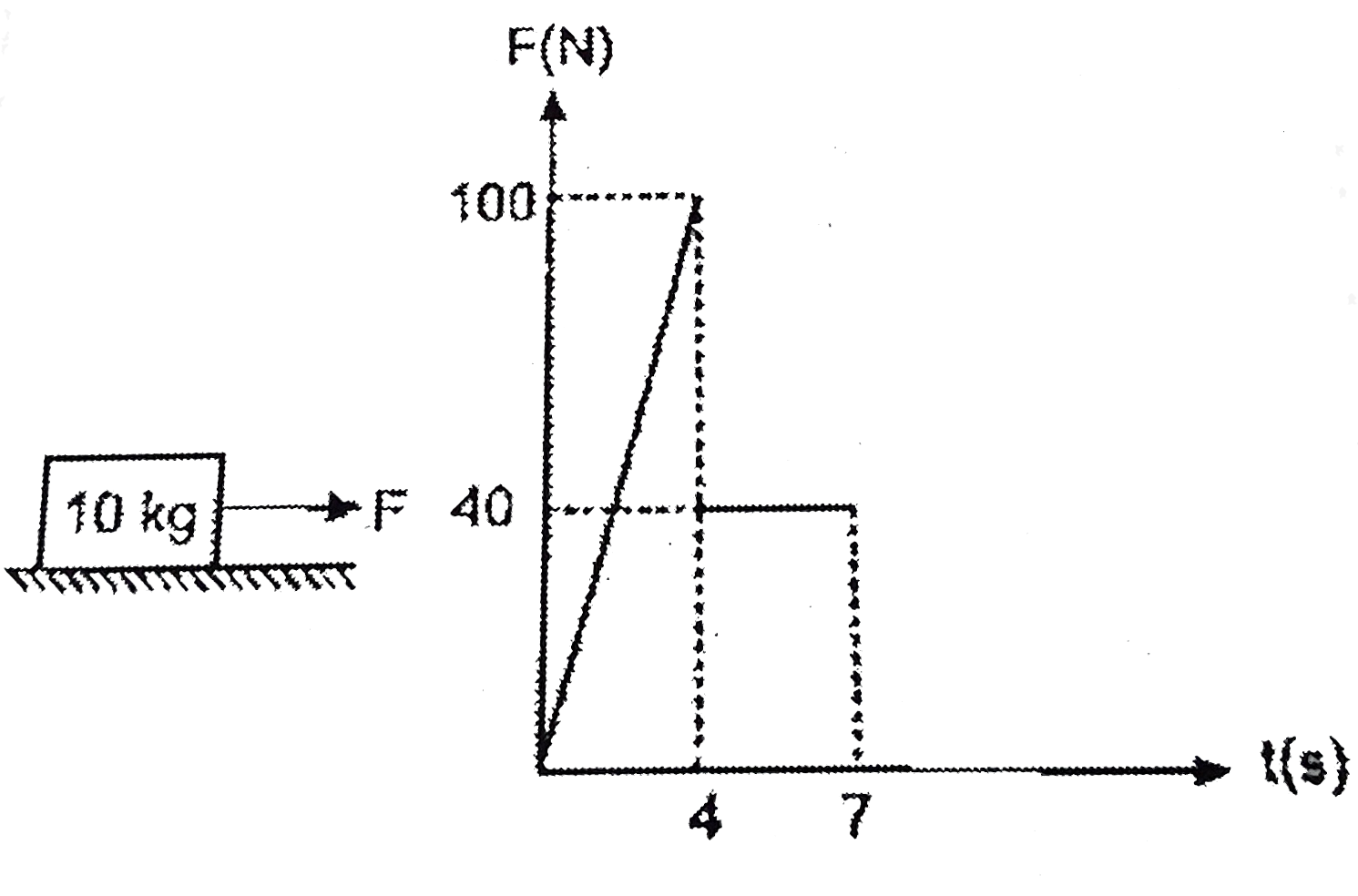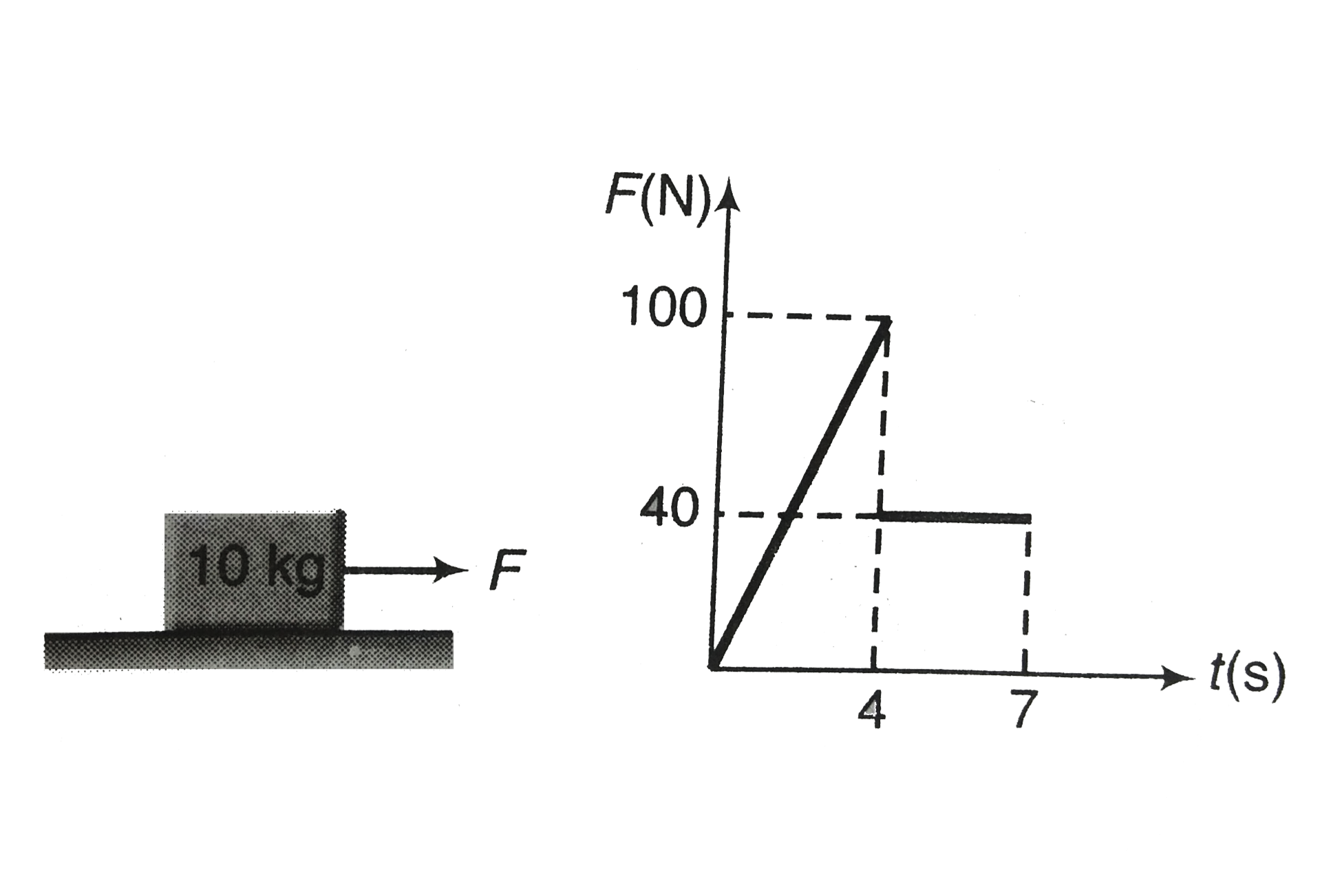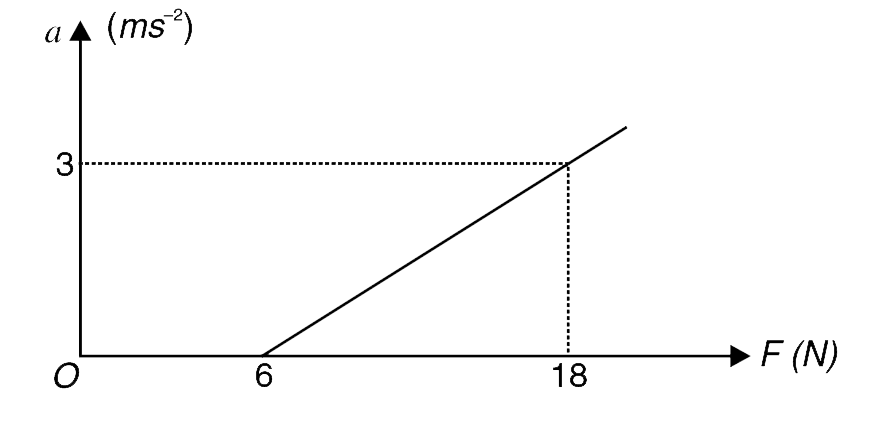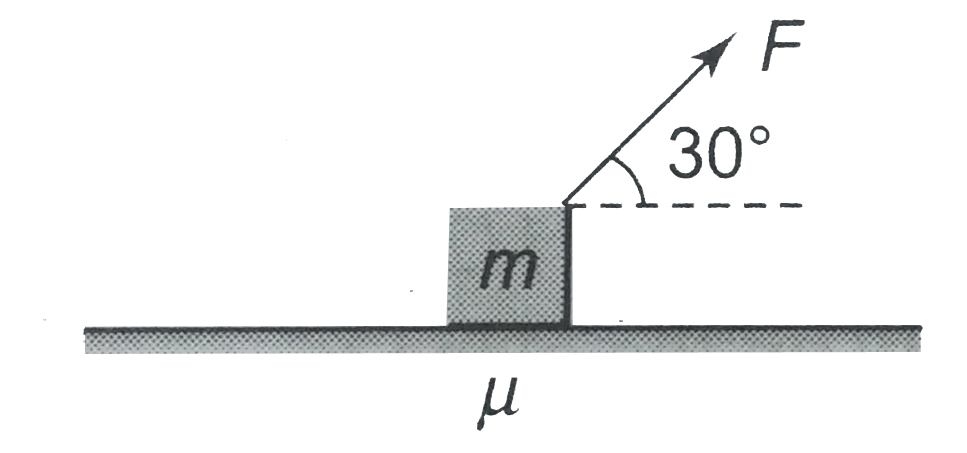The 10 kg block is resting on the horizontal surface when the force 'F is applied to it for 7 second. The variation of 'F with time is shown. Calculate the maximum velocity reached by the block and the total time 't' during which the block is in motion. The coefficient of static and kinetic friction are both, 0.50.

Step by step video & image solution for The 10 kg block is resting on the horizontal surface when the force 'F is applied to it for 7 second. The variation of 'F with time is shown. Calculate the maximum velocity reached by the block and the total time 't' during which the block is in motion. The coefficient of static and kinetic friction are both, 0.50. by Physics experts to help you in doubts & scoring excellent marks in Class 11 exams.
Updated on:21/07/2023Topper's Solved these Questions
- FORCE ANALYSISBook:ANURAG MISHRAChapter:FORCE ANALYSISExercise:level 1
Explore 103 Videos
- FORCE ANALYSISBook:ANURAG MISHRAChapter:FORCE ANALYSISExercise:Level-2
Explore 73 Videos
- FORCE ANALYSISBook:ANURAG MISHRAChapter:FORCE ANALYSISExercise:Matching type
Explore 13 Videos
- DESCRIPTION OF MOTIONBook:ANURAG MISHRAChapter:DESCRIPTION OF MOTIONExercise:Level-3
Explore 34 Videos
- IMPULSE AND MOMENTUMBook:ANURAG MISHRAChapter:IMPULSE AND MOMENTUMExercise:matching
Explore 3 Videos
Similar Questions
The 10kg block is resting on the horizontal surface when the force F is applied to it for 7s . The variation of F with time is shown . Calculate the maximum velocity reached by the block and the total time t during which the block is in motion. The coefficient of static and kinetic friction are both 0.50.(g=9.8m/s2)

View SolutionA block rests on a horizontal surface. A horizontal force F is applied to the block. The acceleration (a) produced in the block as a function of applied force (F) has been plotted in a graph (see figure). Find the mass of the block.

View Solution
Knowledge Check
A 10kg block is initially at rest on a rough horizontal surface. A horizontal force of 60N is required to set the block in motion . After it is in motion , a horizontal force of 50N is required to keep the block moving with constant velocity . The ratio coefficient of static and kinetic friction is
A12B23C65D32A block is kept on a rough surface and applied with a horizontal force as shown which is gradually increasing for zero. The coefficient of static and kinetic friction are 1/√3 then
 AWhen F is less then the limiting friction, angle made by net force on the block by the surfce is less then 30∘ with vertical.BWhen the block is just about to move, the angle made by net force by the surface on the block become equal to 30∘ with vertical.CWhen the block starts to accelerate, the angle made by net force by the surface on the block becomes constant and equal to 30∘ vertical.DThe angle made by net force with vertical on the block by the surface, depends on the mass of the block.
AWhen F is less then the limiting friction, angle made by net force on the block by the surfce is less then 30∘ with vertical.BWhen the block is just about to move, the angle made by net force by the surface on the block become equal to 30∘ with vertical.CWhen the block starts to accelerate, the angle made by net force by the surface on the block becomes constant and equal to 30∘ vertical.DThe angle made by net force with vertical on the block by the surface, depends on the mass of the block.A wooden block of mass M resting on a rough horizontal surface is pulled with a force F at an angle with the horizontal. If is the coefficient of kinetic friction between the block and the surface, then acceleration of the block is -
AFM(cosϕ+μsinϕ)−μgBFsin(ϕ)MCμFcosϕD,uFsinϕ
If the mass of the block A = 10 kg and the coefficient of static and kinetic friction is 0.2, then the mass of block B to start the motion is

View SolutionA block of mass 4 kg is resting on a horizontal table and a force of 10 N is applied on it in the horizontal direction. The coefficient of kinetic friction between the block and the table is 0.1. The work done in √20 s
View SolutionA block is sliding on a rough horizontal surface. If the contact force on the block is √2 times the frictional force, the coefficient of friction is
View SolutionA block of mass m is lying on horizontal surface of coefficient of friction μ. A force is applied to the block at an angle θ with the horizontal. The block will move with a minimum force F if
View SolutionA block of mass m lying on a rough horizontal surface of friction coefficient μ is pulled by a force F as shown , the limiting friction between the block and surface will be

View Solution